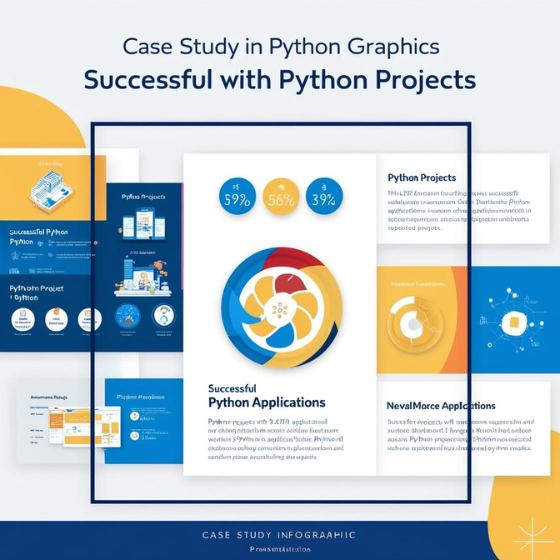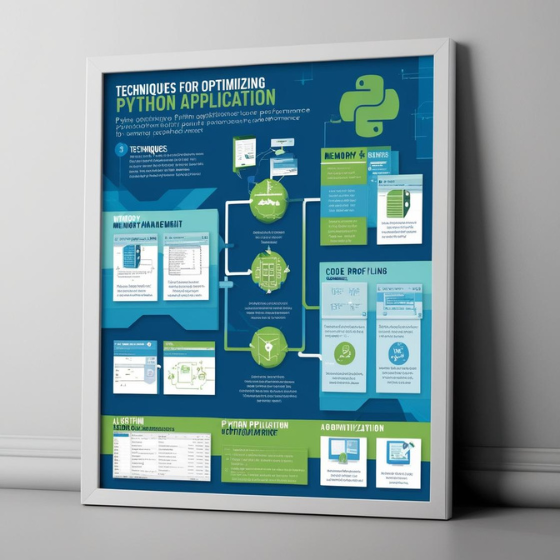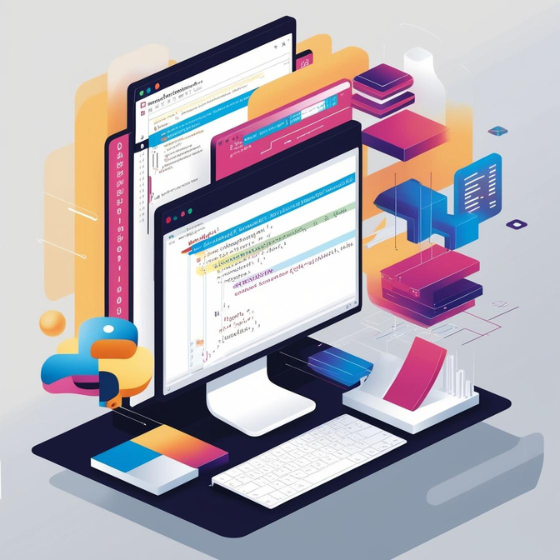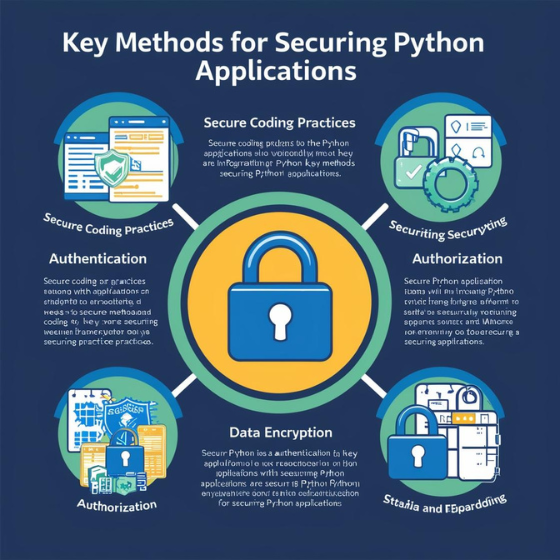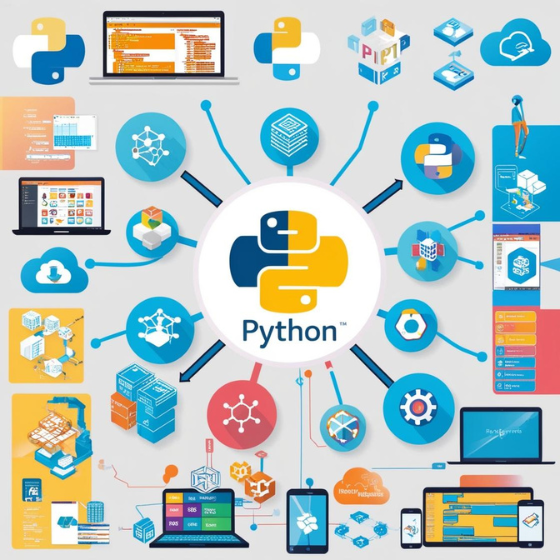Introduction
Did you know that over 80% of web applications rely on APIs to connect to external services and data? The demand for efficient, scalable APIs has never been higher, and Python is one of the most popular programming languages for developing these essential web components. In this blog, we will explore how to develop APIs with Python, highlighting the best practices, frameworks, and tools you need to build powerful, efficient APIs that integrate seamlessly into your web applications. Whether you’re a beginner or a seasoned developer, you’ll gain valuable insights into the API development process using Python.
1. Why Choose Python for API Development?
Before diving into the specifics of how to develop APIs with Python, let’s first discuss why Python is such a great choice for building APIs.
Benefits of Python for API Development
- Simplicity: Python’s clean and readable syntax makes it easy to learn and use. This is crucial for quickly developing APIs and maintaining them over time.
- Large Ecosystem: Python has a vast ecosystem of libraries and tools that make API development much faster. Whether you need to handle authentication, validate inputs, or create custom middleware, Python has a package for it.
- Flexibility: Python can integrate with a wide variety of technologies, including databases, messaging queues, and cloud services, making it an ideal language for creating APIs that interact with various platforms.
Given its advantages, Python has become a go-to choice for developers looking to create APIs that are both powerful and easy to work with.
2. Understanding API Development with Python
In order to fully understand how to develop APIs with Python, it’s essential to know the different components that make up an API. Typically, an API consists of the following parts:
Key Components of an API
- Endpoints: These are the URLs that clients use to interact with your API.
- HTTP Methods: These include GET, POST, PUT, DELETE, etc., which define what kind of action is being taken on the resource.
- Request and Response: APIs send and receive data via HTTP requests and responses, often in the form of JSON or XML.
To start building an API in Python, you need to understand how to handle these components effectively. The next step is to choose a framework that simplifies the process.
3. Python Frameworks for API Development
Python offers several frameworks that can help you develop APIs quickly and efficiently. Let’s explore two of the most popular ones: Flask and Django.
Flask: A Lightweight Framework for Quick Development
Flask is a micro-framework that is simple, minimal, and easy to use, making it perfect for small to medium-sized API projects. It’s also flexible, allowing developers to choose their tools, which means you can scale it as needed.
Why Flask for APIs?
- Minimalistic: Flask provides the basic tools to build APIs, without the overhead of unnecessary components.
- Extensible: With Flask, you can easily integrate third-party extensions for database support, authentication, and more.
- Great for Microservices: Flask is perfect for creating small, independent services that work well in a microservices architecture.
Django: A Comprehensive Framework for Larger Projects
Django is a more heavyweight framework that comes with everything you need to build robust APIs. It includes features like authentication, database management, and URL routing out of the box, making it ideal for large, complex API projects.
Why Django for APIs?
- Batteries-Included: Django provides all the tools you need to handle things like authentication, permissions, and data validation.
- Robust ORM: Django comes with an Object-Relational Mapping (ORM) system that makes working with databases easy.
- Scalability: Django is built to scale, making it an excellent choice for high-traffic APIs.
Django’s django-rest-framework extension provides powerful tools for API development, such as serializers and view sets.
4. Best Practices for Developing APIs with Python
When it comes to how to develop APIs with Python, there are several best practices you should follow to ensure that your APIs are efficient, maintainable, and secure.
Best Practices for Python API Development
- Use RESTful Design: Design your API following REST principles. This includes using the correct HTTP methods, making endpoints logically structured, and ensuring that resources are identified by URLs.
- Authentication and Authorization: Use proper authentication (e.g., OAuth, JWT) to ensure that only authorized users can access your API. Django and Flask both support easy integration with authentication mechanisms.
- Validate Input Data: Always validate user input to prevent malicious data from causing security vulnerabilities. Libraries like
marshmallow(for Flask) and Django’s built-in forms help with input validation. - Error Handling: Provide meaningful error messages and handle exceptions gracefully. Use proper HTTP status codes to indicate the result of the request.
- Documentation: Document your API endpoints and functionality. This makes it easier for other developers to use your API and reduces integration errors.
By following these best practices, you can ensure your API is efficient, secure, and easy to integrate with other services.
5. Testing and Debugging Your Python API
Testing is a critical part of developing any software, and APIs are no exception. Ensuring that your API works as expected helps maintain quality and saves you from future headaches.
How to Test Your Python API
- Unit Testing: Use Python’s
unittestframework to test individual components of your API, such as route handlers and database queries. - Integration Testing: Ensure that your API integrates smoothly with other services or databases by running integration tests.
- Load Testing: Use tools like
LocustorApache JMeterto test how your API performs under heavy load.
Debugging Tools for Python APIs
- Flask Debugger: Flask’s built-in debugger makes it easy to identify and fix issues during development.
- Django Debug Toolbar: The Django Debug Toolbar provides detailed performance information, SQL queries, and more to help you debug efficiently.
Conclusion
In this blog, we’ve explored how to develop APIs with Python, emphasizing the advantages of using this powerful language for API development. We’ve discussed the benefits of Python, popular frameworks like Flask and Django, and best practices to follow when building efficient and secure APIs. By following the tips outlined above, you’ll be well on your way to creating scalable, high-performance APIs that meet the needs of your web applications.
If you’re ready to take the next step in developing APIs for your project, contact Sodio today or explore our API development services. Let our team help you build efficient, scalable APIs that drive your business forwar
Ready to start building your Python API? Get in touch with our expert team at Sodio for assistance with your API development needs. We specialize in creating high-performance APIs that scale with your business. Explore our API development services and start your journey today!

